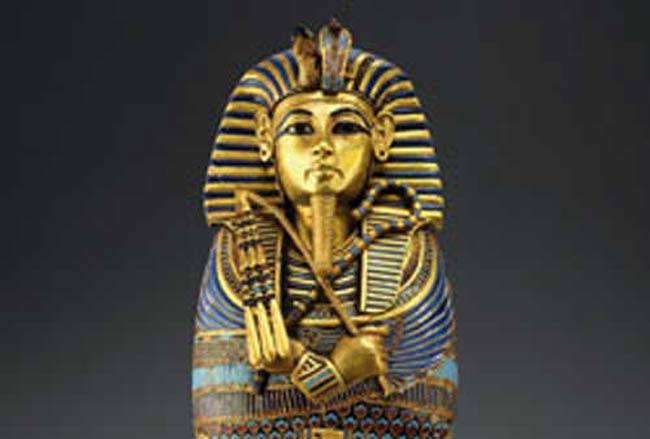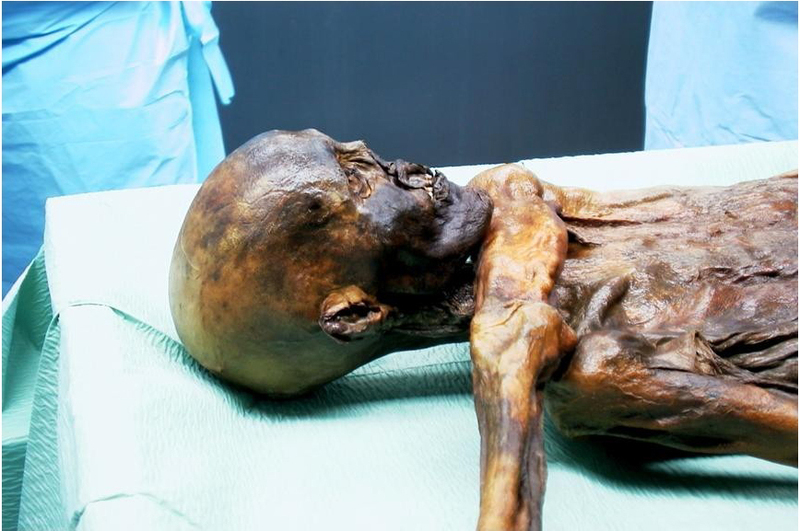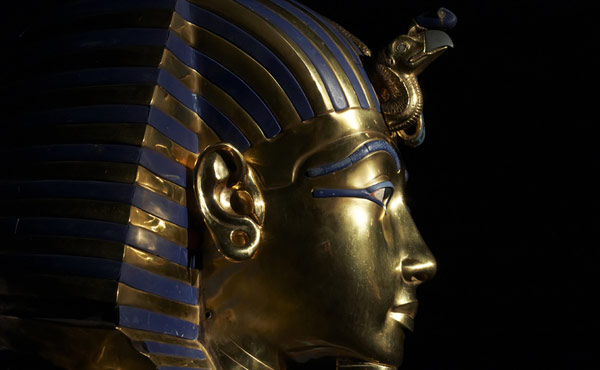Real or Not? 6 Famous Historical Curses
Introduction

Humans can be a superstitious lot, but some historical curses seem too real to be mere coincidence or simple superstition. From King Tutankhamun to the Chicago Cubs, check out these six famous historical curses.
The Curse of Ötzi

The frozen body of Ötzi "the Iceman" was discovered in 1991 in the Ötztal Alps on the Austrian-Italian border, some 5,300 years after the Bronze Age man died (probably during an enemy attack). Rainer Henn, a forensic pathologist who examined Ötzi, died in an auto accident one year later. Kurt Fritz, the guide who led Henn to Ötzi's body, died in an avalanche shortly thereafter. Helmut Simon, who first discovered the body, died from a fall while hiking in 2004. Dieter Warnecke, who headed the rescue team looking for Simon's body, died of a heart attack just hours after Simon's funeral. That may seem like quite a series of coincidences, but given the hundreds of people who have been involved in research on Ötzi, the number of deaths is actually not unusual.
The Mummy's Curse

According to some reports, the tomb of King Tutankhamun was guarded by a stone inscribed with the ominous threat: "Death Shall Come on Swift Wings to Him Who Disturbs the Peace of the King." Undeterred, Egyptologists Howard Carter and Lord Carnarvon opened the tomb to worldwide fanfare in 1922. Shortly thereafter, however, strange fates befell those who had entered the tomb. Lord Carnarvon died four months later while in Egypt from an infected mosquito bite (he was already known to be in poor health). A few hours after his death, back in England, Carnarvon's beloved dog Susie let out a yelp and died. Financier George Jay Gould I died of a fever six months after visiting the tomb. Woolf Joel, a South African millionaire, was murdered a few months after his visit to the tomb. A. C. Mace, a member of Carter's archaeological team, was killed by arsenic poisoning. Carter's personal secretary was found smothered in his bed in 1929. But researchers have determined that, of the dozens of people connected with the opening of the tomb, the vast majority lived long and healthy lives. Others have speculated that some of the deaths may be attributed to toxic molds or bacteria that were disturbed when the tomb was opened.
The Curse of Timur's Tomb

A warlord and nobleman who controlled a vast swath of Asia during the 14th century, Timur (aka Tamerlane) was renowned as a military tactician whose warfare killed some 17 million people. He was also a celebrated patron of architecture and the arts, however. In 1941, Joseph Stalin sent a team of archaeologists to open Timur's tomb in Samarkand, Uzbekistan, much to the alarm of local residents and Muslim clergy. Upon opening Timur's coffin, the team discovered an inscription: "Whoever opens my tomb shall unleash an invader more terrible than I." Within a matter of hours, Adolf Hitler's troops invaded Russia; an estimated 26 million people died as a result. In 1942, Stalin ordered Timur's remains to be reinterred back in Samarkand in accordance with Islamic tradition; shortly thereafter, the German army surrendered at Stalingrad, ending their campaign against the Russians.
The Curse of the Hope Diamond

French merchant Jean Baptiste Tavernier, according to legend, stole a 115-carat blue diamond from the eye of a Hindu idol in India — for this sacrilege, Tavernier was supposedly mauled to death by dogs. But in reality, he sold the gem to King Louis XIV of France in 1669 and retired a wealthy man. All went well until the diamond fell into the hands of King Louis XVI and his wife, Marie Antoinette, who were beheaded during the French Revolution. After Lord Francis Hope of England inherited the diamond, he married an American showgirl. The pair squandered their fortune, sold the diamond and were eventually reduced to poverty. After Evalyn Walsh McLean bought the stone in 1912, her son was killed in a car accident, her daughter committed suicide and her husband left her for another woman (he eventually ended up in an insane asylum). The Smithsonian National Museum of Natural History bought the Hope Diamond in 1958 and hasn't suffered from owning it — but a truck hit the postman who delivered the jewel (he survived). His wife and dog died not long after, however, and his home caught fire.
The Curse of Tippecanoe

Did Native American leader Tecumseh curse William Henry Harrison after Harrison's troops emerged victorious at the Battle of Tippecanoe? Perhaps, as historians have noted that ever since Harrison became president in 1840, every person elected to the office in 20-year intervals has died while serving as president. Harrison died of pneumonia after just one month in office. Abraham Lincoln, elected in 1860, was assassinated, as were James A. Garfield (elected in 1880) and William McKinley (1900). Both Warren G. Harding (1920) and Franklin D. Roosevelt (1940) died of natural causes in office, while John F. Kennedy (1960) was assassinated. Ronald Reagan (1980) was the target of an assassin's bullet in 1981, but he survived, and the curse was apparently lifted.
The Goat and the Curse of the Chicago Cubs

In 1945, a man named Bill "Billy Goat" Sianis was ejected from a Chicago Cubs game because he brought with him a pet goat. Outraged, Sianis reportedly cursed the club with the words, "The Cubs ain't gonna win no more!" Sure enough, the Cubs lost the next game and haven't won a World Series in more than a century, despite many attempts over the years to lift the curse (some of them involving goats). While most regard the curse as a silly superstition, many longtime fans take it very seriously. This April, police in Cook County, Ill., found a decapitated goat tied to a tree near a golf course. A few days later, an unknown man delivered a smelly box addressed to Tom Ricketts, the current owner of the Chicago Cubs baseball team; inside was a decaying goat's head.
Sign up for the Live Science daily newsletter now
Get the world’s most fascinating discoveries delivered straight to your inbox.











